So verwenden Sie einen 48-V-Lithiumbatterietester effektiv
Um die Leistungsfähigkeit Ihrer Lithiumbatterien zu erhalten, ist der effektive Umgang mit einem 48-V-Lithiumbatterietester entscheidend. Ein Batterietester hilft Ihnen, Probleme zu diagnostizieren, die Spannung zu messen, die Balance zwischen den Zellen zu prüfen und sicherzustellen, dass Ihr Stromsystem optimal läuft. In dieser ausführlichen Anleitung erklären wir Ihnen Schritt für Schritt, vom Verständnis Ihres Testers bis hin zu erweiterten Diagnosetipps. Egal, ob Sie Solar-Enthusiast, Elektroauto-Bastler oder Betreiber eines netzunabhängigen Stromsystems sind – diese Anleitung zum Batterietester hilft Ihnen, das Werkzeug zu beherrschen und Ihre 48-V-Lithiumbatteriebank in Topform zu halten.
- Den Zweck eines Batterietesters verstehen
- Auswahl des richtigen Batterietesters für 48-V-Lithiumbatterien
- Sicherheitsvorkehrungen bei der Verwendung eines Batterietesters
- Vorbereiten Ihrer Batterie für den Test mit einem Batterietester
- Schritt-für-Schritt-Anleitung zur Verwendung eines Batterietesters
- Erweiterte Funktionen eines Batterietesters
- Fehlerbehebung bei häufigen Batterietester-Messwerten
- Verwendung eines Batterietesters in einem Solarenergiesystem
- Bewährte Methoden für Batterietester zur Steigerung der Lebensdauer
- Vergleich von Batterietestertypen für 48-V-Lithiumbatterien
- Häufig gestellte Fragen zur Verwendung eines Batterietesters
- Wartung und Kalibrierung des Batterietesters
- Erweiterte Diagnosetipps mit Ihrem Batterietester
- Fallstudien und Beispiele aus der Praxis zu Batterietestern
- Beherrschen Sie Ihren Batterietester
Den Zweck eines Batterietesters verstehen
Bevor Sie sich mit der Verwendung befassen, ist es wichtig zu verstehen , warum Sie einen Batterietester benötigen.
Was misst ein Batterietester?
Ein Batterietester kann Folgendes messen:
Gesamtpaketspannung
Einzelzellenspannung (falls zutreffend)
Ladezustand (SOC)
Innenwiderstand
Gleichgewichtsstatus zwischen Zellen
Dadurch werden Überentladung, Überladung und Ungleichgewichte verhindert, die die Lebensdauer der Batterie verkürzen.
Warum sollte man bei 48-V-Lithiumbatterien einen Batterietester verwenden?
48-V-Lithiumbatterien sind üblich in:
Solarenergiespeicher
Elektrofahrräder oder Roller
Backup-USV-Systeme
Marineanwendungen
Wohnmobil- und Camper-Setups
Durch die Verwendung eines Batterietesters gewährleisten Sie die Sicherheit, Effizienz und Langlebigkeit Ihrer teuren Batteriebank.
Auswahl des richtigen Batterietesters für 48-V-Lithiumbatterien
Nicht alle Tester sind gleich. Die Auswahl des richtigen Batterietesters macht einen großen Unterschied.
Wichtige Funktionen, auf die Sie achten sollten
Spannungsbereich: Muss mindestens 48 V verarbeiten
Cell Balancing: Zur Überwachung einzelner Zellen
Anzeigetyp: Klar, vorzugsweise mit Hintergrundbeleuchtung
Datenprotokollierung: Hilfreich zur Trendverfolgung
Kompatibilität: LiFePO4, NMC oder andere Chemikalien
Beliebte Marken und Modelle
Junsi iCharger
Batrium
JK-BMS-Überwachungstools
ISDT Batterieprüfer
Generische Multimeter (für grundlegende Tests)
Die Investition in einen hochwertigen Batterietester zahlt sich durch die Vermeidung von Schäden aus.
>>Siehe auch: So erkennen Sie, wann Sie die Batterie Ihres Hoverboards austauschen müssen
Sicherheitsvorkehrungen bei der Verwendung eines Batterietesters
Ihr 48-V-Batteriesystem ist leistungsstark. Beachten Sie diese Sicherheitstipps, bevor Sie einen Batterietester anschließen.
Tragen Sie Schutzausrüstung
Schutzbrille
Isolierte Handschuhe
Auf Schäden prüfen
Keine ausgefransten Kabel
Keine Korrosion an den Anschlüssen
Keine Schwellungen oder austretenden Zellen
Lasten und Ladegeräte trennen
Isolieren Sie vor dem Test die Batterie. Dies verhindert Kurzschlüsse oder falsche Messwerte.
Vorbereiten Ihrer Batterie für den Test mit einem Batterietester
Um genaue Ergebnisse zu erzielen, ist Vorbereitung erforderlich.
Laden Sie den Akku auf
Vollständig auf die empfohlene Spannung aufladen
Für LiFePO4: ~3,65 V/Zelle oder 58,4 V-Pack
Lass es ruhen
Warten Sie nach dem Laden 30–60 Minuten
Dies stabilisiert die Spannung für genaue Messwerte
Saubere Anschlüsse
Stellen Sie eine stabile elektrische Verbindung zu Ihrem Batterietester sicher.
Schritt-für-Schritt-Anleitung zur Verwendung eines Batterietesters
Kommen wir nun zur Praxis. So testen Sie Ihre 48-V-Lithiumbatterie effektiv.
Schritt 1 – Tester anschließen
Pluskabel an den Pluspol der Batterie anschließen
Schließen Sie das Minuskabel an den Minuspol der Batterie an
Bei BMS-basierten Testern schließen Sie gegebenenfalls Ausgleichsleitungen an.
Schritt 2 – Batterietester einschalten
Die meisten Tester werden automatisch über die Batteriespannung mit Strom versorgt. Andere verfügen möglicherweise über einen Ein-/Ausschalter.
Schritt 3 – Batterietyp auswählen
Wählen Sie „LiFePO4“ oder die richtige Lithiumchemie
Gewährleistet eine genaue Spannungszuordnung
Schritt 4 – Packspannung ablesen
Bestätigen Sie, dass die Spannung innerhalb der Spezifikation liegt (z. B. 48–58 V für 48-V-Packs).
Schritt 5 – Einzelne Zellen prüfen
Blättern Sie durch die Zellspannungen
Suchen Sie nach Ungleichgewichten (z. B. ist ein Unterschied von >50 mV eine Überlegung wert).
Schritt 6 – Daten aufzeichnen
Messwerte notieren oder exportieren
Verfolgen Sie Trends im Zeitverlauf
Schritt 7 – Sicher trennen
Entfernen Sie zuerst die Ausgleichsleitungen
Dann die Hauptstromleitungen
Bewahren Sie Ihren Batterietester sicher auf
Erweiterte Funktionen eines Batterietesters
Viele moderne Batterietestermodelle bieten mehr als nur Spannungsmessungen.
Prüfung des Innenwiderstands
Erkennt Zellalterung
Höherer Widerstand = verringerte Kapazität
Datenprotokollierung
Verfolgen Sie Spannungstrends über Wochen oder Monate
Frühe Anzeichen eines Ungleichgewichts erkennen
Ausgleichsfunktionen
Einige Tester können Zellen automatisch ausgleichen
Verhindert das Überladen schwächerer Zellen
Konnektivitätsoptionen
Bluetooth-Apps
USB-Exporte
Cloudbasierte Überwachung
Fehlerbehebung bei häufigen Batterietester-Messwerten
Ihr Batterietester zeigt manchmal Probleme an. So interpretieren Sie diese.
Niedrige Packspannung
Unter 46–47 V? Der Akku ist fast leer
Um Schäden zu vermeiden, sofort aufladen
Zellungleichgewicht
50 – 100 mV Streuung? Ausgleich erforderlich
Könnte auf alternde Zellen hinweisen
Hoher Innenwiderstand
Zellen erhitzen sich unter Last
Reduzierte Kapazität
Erwägen Sie den Austausch betroffener Zellen
Verbindungsfehler
Auf lose Clips prüfen
Korrodierte Anschlüsse
Beschädigte Ausgleichsleitungen
Verwendung eines Batterietesters in einem Solarenergiesystem
Viele Leser verwenden 48-V-Lithiumbatterien für netzunabhängige Solaranlagen. Ihr Batterietester ist hier unverzichtbar.
Überprüfen der Ladeleistung
Test vor und nach Ladezyklen
Stellen Sie sicher, dass Ihr Solarladeregler richtig eingestellt ist
Überprüfen des Ladezustands
Verlassen Sie sich nicht nur auf Voltmeter
Die SOC-Schätzung ist mit einem Batterietester präziser
Wartungsplanung
Protokollieren Sie monatliche Messwerte
Planen Sie bei Bedarf einen Ausgleich/Balancieren ein
Bewährte Methoden für Batterietester zur Steigerung der Lebensdauer
Sie möchten, dass Ihre 48-V-Batteriebank mindestens 10 Jahre hält. Ein Batterietester hilft Ihnen dabei.
Regelmäßig testen
Monatlich ist gut
Wöchentlich bei starker Beanspruchung
Balancieren Sie oft
Einige BMS-Systeme erledigen dies automatisch
Manuelles Auswuchten kann die Lebensdauer verlängern
Bewahren Sie Ihren Tester ordnungsgemäß auf
Trockener, sauberer Standort
Schützen Sie Kabel und Anschlüsse
Vergleich von Batterietestertypen für 48-V-Lithiumbatterien
Vergleichen wir die wichtigsten Batterietestertypen , die für Sie in Frage kommen.
Basismultimeter
Vorteile: Günstig, einfach
Nachteile: Nur Gesamtpackspannung
Hobby Ladegeräte/Tester
Vorteile: Daten auf Zellebene, Gleichgewicht
Nachteile: Nur kleinere Packungen
Spezielle Lithiumbatterie-Analysatoren
Vorteile: Zellspannung, Widerstand, Balance, Protokollierung
Nachteile: Teurer
Integrierte BMS-Monitore
Vorteile: Immer verbunden, Live-Daten
Nachteile: Installation erforderlich
Die Wahl des richtigen Batterietesters hängt von Ihrem Budget und Ihren Anforderungen ab.
Häufig gestellte Fragen zur Verwendung eines Batterietesters
Kann ich einen 12-V-Tester für eine 48-V-Batterie verwenden?
Nein, es sei denn, der Tester ist für 48 V oder mehr ausgelegt.
Gefahr von Beschädigungen oder falschen Messwerten.
Wie oft sollte ich testen?
Monatliches Minimum
Häufiger in kritischen Systemen
Ist ein Zellausgleich notwendig?
Absolut! Verhindert Schäden durch Überladung.
Die meisten BMS-Systeme erledigen dies automatisch, eine manuelle Überprüfung ist jedoch sinnvoll.
Was passiert, wenn ich den Test überspringe?
Risiko unbemerkter Zellausfälle
Verkürzte Akkulaufzeit
Mögliche Sicherheitsrisiken
Wartung und Kalibrierung des Batterietesters
Ihr Batterietester ist nur so gut wie seine Genauigkeit.
Halte es sauber
Mit einem trockenen Tuch abwischen
Vermeiden Sie Feuchtigkeit
Wenn möglich kalibrieren
Einige Tester ermöglichen eine Benutzerkalibrierung
Befolgen Sie die Richtlinien des Herstellers
Leitungen prüfen
Ausgefranste Kabel ersetzen
Anschlüsse auf Korrosion prüfen
>>Siehe auch: Können Sie eine 5-V-Batterie mit einem 12-V-Ladegerät aufladen?
Erweiterte Diagnosetipps mit Ihrem Batterietester
Wenn Sie bereit sind, ein höheres Level zu erreichen, versuchen Sie Folgendes:
Protokollierungszyklen
Spannung nach 50–100 Zyklen aufzeichnen
Alterungstrends frühzeitig erkennen
Belastungstests
Bekannte Last anwenden
Spannungsabfall überwachen
Resistenzprofilierung
Vergleichen Sie den Innenwiderstand im Zeitverlauf
Ersetzen Sie Zellen, bevor sie ausfallen
Fallstudien und Beispiele aus der Praxis zu Batterietestern
Solar-Inselnetzsystem
Monatliche Protokolle zeigten eine Zelle driften
Frühzeitiges Auswuchten verhinderte Ausfall
Elektrofahrradpaket
Tote Zelle erkannt, bevor sie unterwegs ausfiel
Kostenersparnis für neue Packung
Marine House Bank
Verwendeter Tester zum Bestätigen der Ladereglereinstellungen
Verbesserte Batterielebensdauer
Beherrschen Sie Ihren Batterietester
Sie sollten nun sicher sein , wie Sie einen 48-V-Lithiumbatterietester effektiv einsetzen . Dieses Werkzeug ist unverzichtbar für alle, die auf Lithiumbatterien angewiesen sind. Regelmäßige Tests, sorgfältige Protokollierung und proaktives Balancing verlängern die Lebensdauer Ihres Systems, sparen Geld und vermeiden Überraschungen.
Denken Sie daran: Die Verwendung eines Batterietesters ist nicht nur eine lästige Pflicht – er ist Ihr Schlüssel zu zuverlässiger Stromversorgung in jeder Anwendung. Ob netzunabhängig, unterwegs oder auf dem Wasser – Tests sorgen für Ihre Stromversorgung und Sicherheit. Nehmen Sie sich die Zeit, Ihren Batterietester kennenzulernen, und Sie werden jahrelang das Beste aus Ihrem 48-V-Lithium-Batteriespeicher herausholen.



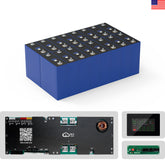

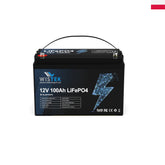
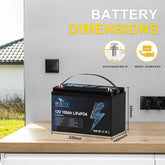
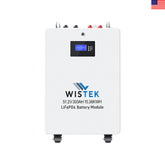
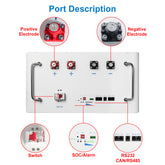
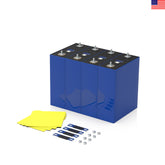
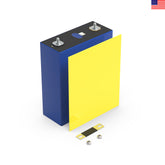
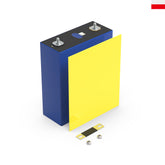

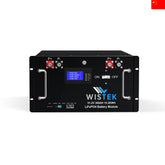
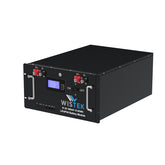
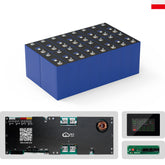








Leave a comment
All blog comments are checked prior to publishing